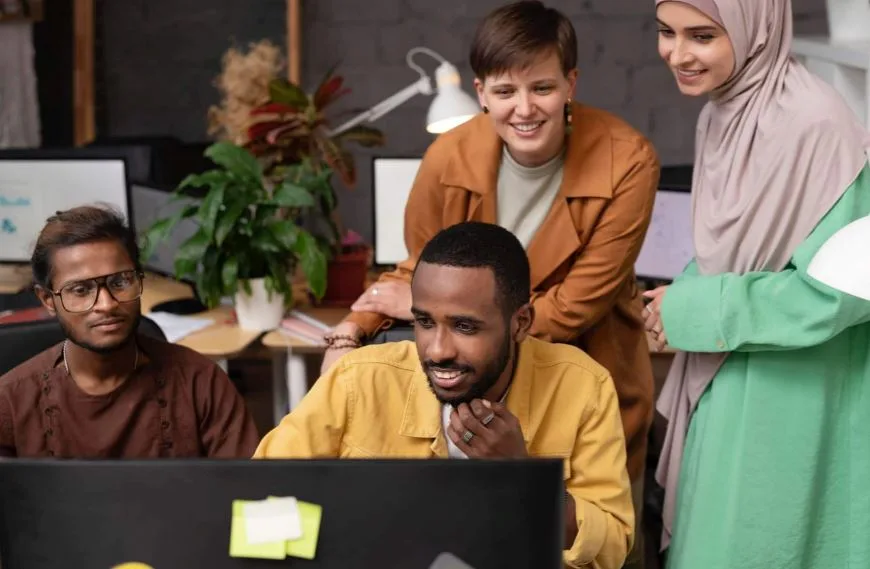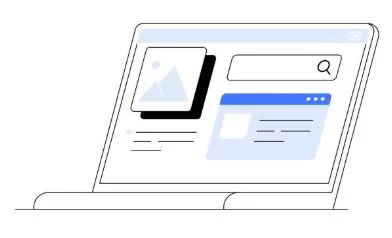Content Localization Tips for Arabic and English Audiences in a Digital Campaign in the UAE
Making content for the UAE is not about mere waxing poetic on a translation. It rests on trust by two major audience segments: the Arabic and English speakers. The country being a melting pot for cultures and languages, brands have got to localize the digital marketing services in a smart and respectful way.
Why Localization is More Than Translation
Many brands make the mistake of just translating their content word-for-word. But that can backfire. True localization means adapting your tone, visuals, cultural references, and even website layout to meet the expectations of your audience.
- Arabic content often requires a different writing tone, right-to-left formatting, and respectful phrasing.
- English content in the UAE usually caters to expats, so it can be more casual and globally appealing.
Some Tips for Localizing Your Content
- Use Professional Human Translators
Do not ever go for Google Translate. Get somebody who is a native speaker and culturally competent in the target language to his or her region.
- Design for RTL Design (Right-to-Left)
Arabic websites flip the layout to accommodate right-to-left reading; menus, images, icons, and alignment are all considered from right to left, not left to right.
3. More use of Local Examples & Phrases
Use often UAE-centric references instead of using global clichés. For example, use “Etisalat” or “Dubai Metro” instead of “Verizon” or “London Underground.”
4. Local SEO Matters
Use Arabic keywords for Arabic pages. Search engines like Google index Arabic content differently.
Chart: Common SEO Terms in Arabic vs English (Example for Local Search)
| English Keyword | Arabic Equivalent |
| Digital marketing Dubai | التسويق الرقمي في دبي |
| Ecommerce UAE | التجارة الإلكترونية في الإمارات |
| SEO agency in UAE | شركة تحسين محركات البحث في الإمارات |
Expansion 1: Multilingual Social Media Strategy
- Your Instagram, TikTok, or Facebook channels should not really be one-size-fits-all. What works are:
- Create separate captions in Arabic and English (not just translation in the same post).
- Use of bilingual hashtags For example: [#UAEshopping #تسوق_الإمارات.]
- To maintain a good balance, follow: alternate language posts in Stories and Reels.
Expansion 2: Dual-Language Audiences and Email Marketing
- In the UAE, Email conversion is still one of the best and preferred ways of doing conversions for e-commerce. Segment your audience by preferred language:
- Ask users for their language during sign-up.
- Create two versions of your newsletters.
- Use culturally relevant CTAs, like special Eid promotions for Arabic readers.
Expansion 3: Paid Ads That Actually Work
When running Google or Meta ads in the UAE:
- Set different ad sets for the Arabic and English audiences.
- Change your Images and CTA to complement the Language and Audience.
- Mention deals from within the UAE, free delivery across the UAE, or COD options, which hold great popularity with Arabic audiences.
Expansion 4: Cultural Sensitivity in Visuals and Tone
The Arab world is visually and culturally divergent:
- Do not overexpose imagery or use slang that may be off-putting.
- Use inclusive visuals—features Emiratis with expats.
- Observe local customs during Ramadan, Eid, or UAE National Day.
Expansion 5: UX/UI Localization for Higher Engagement
It’s not only about the translation of words, but how users experience a website, or an app in one language or the other.
- Arabic users may expect: navigation menus on RTL, calendar formats in Hijri, and even color symbolism such as green for trust.
- English users may want: a fast scroll layout, and direct language.
- On a localized level, chatbots can speak both Arabic and English.
- Geo-IP redirection for auto-detect language preference.
A few minor UX tweaks based on language reduce bounce rates and deliver more engagement.
Expansion 6: Voice Search Arabic Optimizations
The voice search is booming, especially in mobile-first Gulf countries like the UAE. Many users ask their phones in Arabic because the queries are for:
- “أقرب مطعم لبناني مفتوح الآن” (nearest Lebanese restaurant open now)
- “أفضل متجر ملابس رجالية في دبي” (best men’s clothing store in Dubai)
To localize voice search:
- Add long-tail Arabic keywords.
- Use natural conversational phrases in the content.
- FAQ-style optimization needs to be done in both languages.
- Optimize for FAQ-style content in both languages.
Expansion 7: Local Influencers Collaboration with a Dual Reach
Are you working with influencers? Choose wisely:
- Look for bilingual influencers who can genuinely speak to both markets.
- Run split campaigns—one version in Arabic, one in English—with a different influencer on each.
- Focus on micro-influencers who engage the small-scale local communities very well (Arabic book lovers, expat techies, Emirati fashion fans, etc.)
- This way, your message not only gets stitched out but also hits home.
This ensures your message doesn’t just reach people—it resonates.
Expansion 8: Track by Language Performance
When the campaigns are live, start measuring performance by segment, i.e., Arabic and English.
- Track click-through rates (CTR), bounce rate, and conversions by language.
- Use tools like Google Analytics, Hotjar, and Meta Insights to check heatmaps or dwell time.
- Adjust your messaging, call-to-action, and layout based on reactions from each audience.
A/B testing with multiple languages mostly results in major differences in what people usually respond to.
Final Tip
To build authority, trust, and grow your digital ROI in the UAE, there is no other option for localization —it’s a must.
Work with one of the top search engine optimization company in Dubai that regularly work with businesses can understands these localization layers really well. If you want help with your bilingual content or SEO? Partner with a trusted digital marketing agency in UAE today to make your brand and business stand out on both sides of the language line, english as well as the local language, that is arabic.




